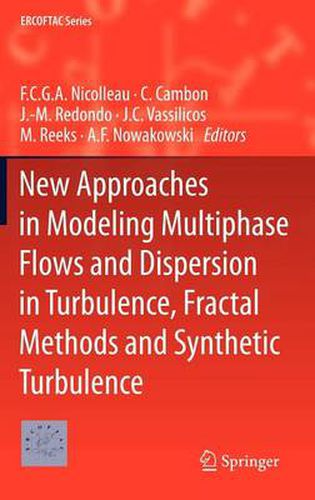Readings Newsletter
Become a Readings Member to make your shopping experience even easier.
Sign in or sign up for free!
You’re not far away from qualifying for FREE standard shipping within Australia
You’ve qualified for FREE standard shipping within Australia
The cart is loading…






This title is printed to order. This book may have been self-published. If so, we cannot guarantee the quality of the content. In the main most books will have gone through the editing process however some may not. We therefore suggest that you be aware of this before ordering this book. If in doubt check either the author or publisher’s details as we are unable to accept any returns unless they are faulty. Please contact us if you have any questions.
This book contains a collection of the main contributions from the first five workshops held by Ercoftac Special Interest Group on Synthetic Turbulence Models (SIG42. It is intended as an illustration of the sig’s activities and of the latest developments in the field.
This volume investigates the use of Kinematic Simulation (KS) and other synthetic turbulence models for the particular application to environmental flows.
This volume offers the best syntheses on the research status in KS, which is widely used in various domains, including Lagrangian aspects in turbulence mixing/stirring, particle dispersion/clustering, and last but not least, aeroacoustics. Flow realizations with complete spatial, and sometime spatio-temporal, dependency, are generated via superposition of random modes (mostly spatial, and sometime spatial and temporal, Fourier modes), with prescribed constraints such as: strict incompressibility (divergence-free velocity field at each point), high Reynolds energy spectrum. Recent improvements consisted in incorporating linear dynamics, for instance in rotating and/or stably-stratified flows, with possible easy generalization to MHD flows, and perhaps to plasmas. KS for channel flows have also been validated. However, the absence of sweeping effects in present conventional KS versions is identified as a major drawback in very different applications: inertial particle clustering as well as in aeroacoustics. Nevertheless, this issue was addressed in some reference papers, and merits to be revisited in the light of new studies in progress.
$9.00 standard shipping within Australia
FREE standard shipping within Australia for orders over $100.00
Express & International shipping calculated at checkout
This title is printed to order. This book may have been self-published. If so, we cannot guarantee the quality of the content. In the main most books will have gone through the editing process however some may not. We therefore suggest that you be aware of this before ordering this book. If in doubt check either the author or publisher’s details as we are unable to accept any returns unless they are faulty. Please contact us if you have any questions.
This book contains a collection of the main contributions from the first five workshops held by Ercoftac Special Interest Group on Synthetic Turbulence Models (SIG42. It is intended as an illustration of the sig’s activities and of the latest developments in the field.
This volume investigates the use of Kinematic Simulation (KS) and other synthetic turbulence models for the particular application to environmental flows.
This volume offers the best syntheses on the research status in KS, which is widely used in various domains, including Lagrangian aspects in turbulence mixing/stirring, particle dispersion/clustering, and last but not least, aeroacoustics. Flow realizations with complete spatial, and sometime spatio-temporal, dependency, are generated via superposition of random modes (mostly spatial, and sometime spatial and temporal, Fourier modes), with prescribed constraints such as: strict incompressibility (divergence-free velocity field at each point), high Reynolds energy spectrum. Recent improvements consisted in incorporating linear dynamics, for instance in rotating and/or stably-stratified flows, with possible easy generalization to MHD flows, and perhaps to plasmas. KS for channel flows have also been validated. However, the absence of sweeping effects in present conventional KS versions is identified as a major drawback in very different applications: inertial particle clustering as well as in aeroacoustics. Nevertheless, this issue was addressed in some reference papers, and merits to be revisited in the light of new studies in progress.